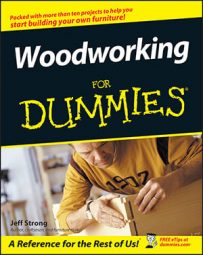Woodworking is painstaking and rewarding work. Following a plan helps ensure that your woodworking project comes out the way you envisioned. The following list sets out the steps to follow to build a piece of furniture (or any project for that matter):
Read the plans.
Familiarize yourself with the plans and procedures before you buy or cut any wood. Make sure the project is something you can handle.
Check and double-check the materials list.
Organize the list so that you can efficiently get the supplies you need before you cut a board.
Plan your cut list.
Go through all your wood and lay out where each cut is going to go. Choose the most appropriate part of the board for each part of the project. For instance, choose matching tabletop pieces for grain patterns and color consistency. Also, plan your cuts so that you do the minimum of saw adjustments (do all the crosscuts first and then all the rip cuts, for example).
Pre-mill all the boards to get straight and flat pieces.
This goes hand in hand with the cut list planning procedure in Step 3.
Mill the boards to their final dimensions.
This involves planing and jointing the boards.
Cut the joints.
Dry fit the assemblies to make sure everything fits properly.
Make sure that your assemblies and subassemblies fit together properly before you add any glue. You also want to use this step to practice the assembly procedure. Repeat the procedure until you can do it smoothly and efficiently.
Glue the assembly and clamp it.
Work quickly and pull each joint fully together before moving on. This minimizes the possibility of joint freeze-up. When clamping, be careful not to use too much pressure. Use just enough force to pull the joints together. You don’t want to squeeze all the glue out.
Square the parts.
Tabletops should be perfectly flat and other assemblies should be perfectly square. Use a straightedge to check for flatness and a tape measure (measuring diagonally across the assembly) to check for square.
Clean up.
Put the assembly aside where it won’t get bumped and clean up all the glue seepage before it dries.
Take a break.
You’ve earned it.

